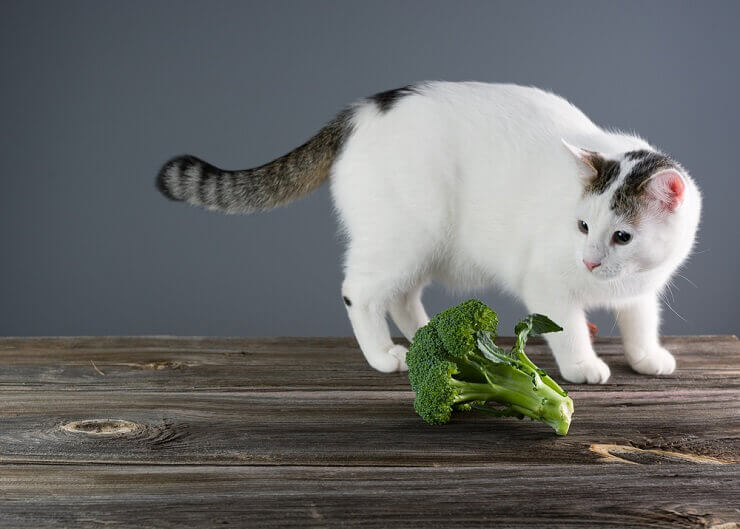Tomato Talk: Unveiling the Truth About Dogs and Tomatoes
Are you curious if your furry friend can indulge in the juicy goodness of tomatoes? It’s a common question among dog owners, and rightfully so! We all want to ensure our canine companions stay healthy and happy. Well, fear not because I’m here to dish out the facts about whether dogs can eat tomatoes.
Your pup’s eyes light up as you slice into a ripe, red tomato. But hold on a second! Before you toss them a slice, let’s uncover the truth together. Contrary to popular belief, tomatoes aren’t all bark and no bite for dogs. In fact, ripe tomatoes can be a delightful and nutritious treat for your four-legged friend.
But wait, there’s a catch! While the red, fleshy part of tomatoes is A-OK for your pup, some sneaky pitfalls are hiding in the greenery. Let’s delve into the nitty-gritty details and find out how to keep your pup safe while enjoying this garden delight. So, buckle up and get ready to explore the compelling world of dogs and tomatoes! 🍅🐾
Contents
- 1 Can dogs eat tomatoes?
- 2 Nutritional Benefits:
- 3 Potential Risks:
- 4 Safe Preparation Methods:
- 5 Suitable Quantities:
- 6 Do’s and Don’ts:
- 7 Are Tomatoes Bad for Dogs? What You Need to Know?
- 8 Can Dogs Eat Tomatoes?
- 9 What is Tomatine Poisoning?
- 10 Tomatine Poisoning Symptoms to Look For?
- 11 Are Tomatoes Good for Dogs?
- 12 How to Safely Share Tomatoes with Dogs?
- 13 How to Prevent Dogs from Ingesting Too Many Tomatoes?
- 14 Can I Have a Dog and Grow Tomatoes?
- 15 How To Safely Feed a Dog Tomatoes
- 16 How Many Tomatoes Can Dogs Eat?
Can dogs eat tomatoes?
Ripe tomatoes are safe for dogs as treats, but green parts contain tomatine, which can be harmful. Offering ripe cherry tomatoes or slices as occasional treats is okay, ensuring the removal of stems and leaves. However, avoid letting dogs consume tomato plants or unripe tomatoes to prevent potential toxicity.
Nutritional Benefits:
Ripe tomatoes offer dogs essential nutrients like vitamins A and C, potassium, and antioxidants. These nutrients support immune health, proper muscle function, and overall well-being in dogs. Incorporating ripe tomatoes into a dog’s diet as an occasional treat can contribute positively to their nutrition.
Potential Risks:
While ripe tomatoes are generally safe for dogs, certain parts of the tomato plant contain tomatine, a chemical that can be harmful when ingested in large amounts. Symptoms of tomatine poisoning include upset stomach, muscle weakness, tremors, and even cardiac effects. To prevent poisoning, it’s crucial to avoid letting dogs consume green parts of the plant.
Safe Preparation Methods:
To safely prepare tomatoes for dogs, remove all green parts, including stems and leaves, as these contain higher concentrations of tomatine. Dice the ripe tomato flesh into small, manageable pieces to prevent choking hazards. Start with small amounts and monitor for any adverse reactions when introducing tomatoes into a dog’s diet.
Suitable Quantities:
Portion control is essential when feeding tomatoes to dogs. Start with small quantities and gradually increase, ensuring it remains within the recommended 10% of their daily caloric intake from treats. Monitoring portion sizes helps prevent overconsumption and potential health issues in dogs.
Do’s and Don’ts:
- Do: Offer ripe tomatoes as an occasional treat in small, diced pieces.
- Do: Remove all green parts of the tomato plant before feeding to dogs.
- Do: Monitor dogs for any adverse reactions after consuming tomatoes.
- Don’t: Allow dogs to ingest green parts or unripe tomatoes to avoid tomatine poisoning.
- Don’t: Overfeed tomatoes to dogs, as excessive consumption can lead to digestive upset or other health issues.
Are Tomatoes Bad for Dogs? What You Need to Know?
Tomatoes pose potential risks to dogs due to the presence of tomatine in certain parts of the plant. While ripe tomatoes are generally safe, other parts, like leaves and stems, contain this chemical, which can lead to tomatine poisoning. It’s crucial to understand the dangers associated with tomato consumption for our furry companions.
Can Dogs Eat Tomatoes?
Dogs can indeed consume ripe tomatoes in moderation, but it’s important to be cautious. Ripe tomatoes provide essential nutrients like vitamins A and C, potassium, and antioxidants, contributing positively to a dog’s health. However, vigilance is required to ensure dogs only ingest ripe tomatoes and avoid toxic green parts.
What is Tomatine Poisoning?
Tomatine poisoning occurs when dogs ingest parts of the tomato plant containing tomatine, such as leaves and stems. This can lead to various symptoms, including upset stomach, muscle weakness, tremors, and even cardiac effects in severe cases. Recognizing these symptoms is crucial for prompt intervention and treatment.
Tomatine Poisoning Symptoms to Look For?
Signs of tomatine poisoning in dogs include gastrointestinal upset (vomiting, diarrhoea), loss of coordination, muscle weakness, tremors, and, in severe cases, irregular heartbeats and seizures. Monitoring dogs for these symptoms after tomato ingestion is essential for identifying potential poisoning early on.
Are Tomatoes Good for Dogs?
Despite the risks associated with certain parts of the tomato plant, ripe tomatoes offer several health benefits for dogs. They contain valuable nutrients like vitamins A and C, potassium, and antioxidants, supporting immune health, proper muscle function, and overall well-being in dogs.
When offering tomatoes to dogs, it’s crucial to do so safely. Remove all green parts and dice the flesh into small, manageable pieces to prevent choking. Additionally, limit tomato consumption to moderation, ensuring it remains a treat rather than a meal to avoid potential health issues.
How to Prevent Dogs from Ingesting Too Many Tomatoes?
Preventing dogs from consuming excessive tomatoes involves implementing measures like keeping tomato plants fenced off or out of reach. Monitoring dogs while cooking with tomatoes and ensuring they don’t access unripe tomatoes or tomato-based products with harmful ingredients are essential for their safety.
Can I Have a Dog and Grow Tomatoes?
Dog owners can safely grow tomatoes, but precautions must be taken to prevent canine access to the plants. Fencing off garden areas or placing tomato pots in inaccessible locations can help deter dogs from ingesting toxic parts of the plant, ensuring a safe environment for both pets and plants.
How To Safely Feed a Dog Tomatoes
Feeding tomatoes to dogs requires careful preparation and portion control. Remove all green parts, including stems and leaves, and offer small, diced pieces to prevent choking hazards. Start with small amounts and monitor for any adverse reactions, adjusting portions accordingly to ensure safety.
How Many Tomatoes Can Dogs Eat?
Portion control is essential when feeding tomatoes to dogs. Start with small quantities and gradually increase, ensuring it remains within the recommended 10% of their daily caloric intake from treats. Following this guideline helps prevent overconsumption and potential health issues in dogs.
Conclusion
In conclusion, while ripe tomatoes can be a tasty and nutritious occasional treat for dogs, pet owners must exercise caution and responsible feeding practices. By removing all green parts of the tomato plant and offering small, diced pieces in moderation, dogs can safely enjoy the benefits of this garden delight.
Remembering to monitor for any adverse reactions and avoiding overconsumption is essential for maintaining the health and well-being of our furry companions. By following these guidelines, we can ensure that dogs can enjoy the occasional tomato treat without compromising their safety.
NOTE: Always check with your veterinarian first before giving your dog any new foods, especially “people foods.” What might be okay for one dog might not be suitable for your dog, depending on multiple factors, such as their age, health history, health conditions, and diet. Dogs on prescription diets should not be fed any food or treats outside the diet.
FAQs about Dogs Eating Tomatoes
Q: Can dogs eat cherry tomatoes?
Yes, dogs can safely eat cherry tomatoes as long as they are ripe and free of green parts. Remember to offer them in moderation as an occasional treat.
Q: Can dogs eat tomato sauce?
It’s best to avoid feeding dogs tomato sauce, as it often contains additional ingredients like garlic and onions, which can be harmful to dogs. Stick to offering them ripe tomatoes instead.
Q: Can dogs eat tomato soup?
No, it’s not recommended to feed dogs tomato soup, as it may contain ingredients like onions, garlic, or spices that are not suitable for canine consumption. Stick to offering ripe tomatoes as a safer alternative.
Q: Can dogs eat ketchup?
While a small amount of ketchup is unlikely to harm dogs, it could be an ideal treat due to its high sugar and salt content. Additionally, some ketchup may contain artificial sweeteners like xylitol, which is toxic to dogs. It’s best to avoid feeding dogs ketchup altogether.
Q: Can dogs eat tinned tomatoes?
Tinned tomatoes may contain added ingredients like salt or seasonings, which can be harmful to dogs. It’s safer to offer dogs fresh, ripe tomatoes that have been prepared and served without any additional ingredients.
Q: How can I feed tomatoes to my dog?
To feed tomatoes to your dog safely, remove all green parts, including stems and leaves, and dice the ripe tomato flesh into small, manageable pieces. Offer them as an occasional treat, and monitor your dog for any adverse reactions after consumption.
Q: Can puppies eat tomatoes?
Puppies have sensitive digestive systems, so it’s best to avoid feeding them tomatoes until they are older. Once they reach adulthood, you can gradually introduce ripe tomatoes into their diet, following the same precautions as with adult dogs.
Q: Are tomatoes poisonous for dogs?
Ripe tomatoes themselves are not poisonous to dogs, but certain parts of the tomato plant, such as leaves and stems, contain a chemical called tomatine, which can be harmful if ingested in large amounts. It’s essential to remove all green parts before feeding tomatoes to dogs.
Q: When are tomatoes bad for dogs?
Tomatoes that contain green parts or unripe tomatoes are rotten for dogs, as these parts of the plant contain higher concentrations of tomatine, which can lead to poisoning. Always ensure that tomatoes offered to dogs are ripe and accessible from any green parts.
Q: Can I give my dog tomato sauce and soups?
It’s not recommended to give dogs tomato sauce or soups, as they may contain ingredients like onions, garlic, or spices that can be harmful to dogs. Stick to offering ripe tomatoes as a safer alternative.
- Golden Retriever Pros and Cons: What Every Pet Parent Should Know - 15 September 2025
- Cane Corso Dog Breed: Health, Care, and Lifespan - 14 September 2025
- Catahoula Leopard Dogs: Description, Temperament, Lifespan, & Facts - 21 July 2025







